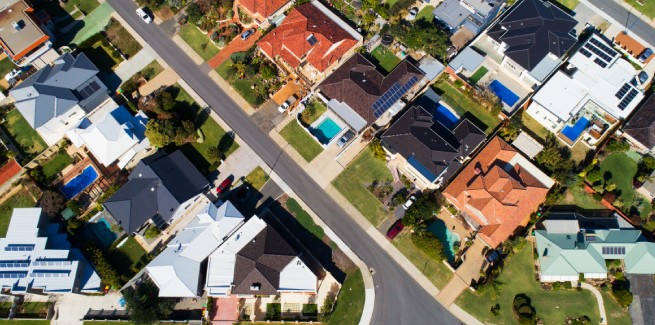New figures released by the Australian Bureau of Statistics (ABS) have shown new Australian home loan commitments rose by 6.3 per cent during November 2021, up to $31.4 billion – marking a return to growth for the market for the first time since July.
The value of new loans was up 32.2 per cent year-on-year.
Loans for investors rose by 3.8 per cent over the month, and by 86.9 per cent from the year before, to a value of $10.10 billion.
But it was owner-occupiers who were the driving catalyst for the overall rise in home loans, as their new mortgages escalated by 7.6 per cent over the month.
New loans to owner-occupiers came to $21.3 billion, 17.2 per cent higher than a year prior.
The bulk of new owner-occupier loans was from the purchase of existing dwellings, with $16.3 billion worth in new commitments, up 7.7 per cent month-on-month and increasing 32.5 per cent year-on-year.
New loans for the construction of new homes in the year to November plummeted, with the total value falling by 23.2 per cent to $2.34 billion worth.
The number of loan commitments for constructions had declined significantly in the year to November last year, dropping by 34.5 per cent to a total of 4,703.
First home buyers represented $5.38 billion in new loans over the month, reflecting a 3.7 per cent increase from October, although they accounted for 6 per cent less compared to the previous year.
The number of new loan commitments to first home buyers increased by 1.9 per cent to 11,622 over November – the first time in nine months the total has grown. But, it was 17.4 per cent lower than a year before.
First home buyer activity in Victoria grew, with new home loans up by 12.3 per cent over the month, but it was 6.7 per cent lower than it was in November 2020.
Other regions reported growth, including NSW (which was up 2.2 per cent from October), the ACT (up 27.1 per cent), Western Australia (increasing 1.3 per cent) and the Northern Territory (growing by 22.5 per cent).
The only states to record declines were Queensland (-1.5 per cent), South Australia (-4.6 per cent), and Tasmania (-15.8 per cent).
While the November figures suggest a positive shift after a prolonged period of stagnation, Bluestone Home Loans consultant economist Andrew Wilson believes the uptick may not last.
“Although home lending increased over November, the outlook clearly remains mixed with affordability barriers, the satisfaction of pent-up demand, and uncertainty – and the reimposition of restrictions – regarding the current severe coronavirus outbreak, set to reduce home buying activity over coming months,” Dr Wilson said.
Housing prices increased by 22.1 per cent over 2021, according to CoreLogic.
The new ABS data has reflected the rise in prices, with the average owner-occupier loan size in Australia increasing by 4.32 per cent to $595,568. Every state but Western Australia (which saw a fall in average loan size of 0.12 per cent) reported growth over November.
NSW and Victoria recorded an average loan sum above the national average, at $769,459 and $618,602 respectively.
The NT reported an average loan of $585,859 – a rise of more than 5 per cent since September, when it was last recorded.
Real Estate Institute of Australia (REIA) president Hayden Groves said that these loan rates were at a record high and echoed the issue of housing affordability in Australia.
“This indicates that housing affordability in some regions could still be a key issue facing Australians, however, the number of new loan commitments to owner-occupier first home buyers rose slightly at 1.9 per cent in November 2021 (seasonally adjusted),” Mr Groves said.
However Mr Groves later added that the figures of investor activity prove “once more the resilience of Australia’s private property markets as Australia and the world rides the current wave of Omicron”.
“It is our hope that 2022 should see a more stable market in line with an expected increase in stock levels for first home buyers, owner occupiers and investors alike,” Mr Groves said.









